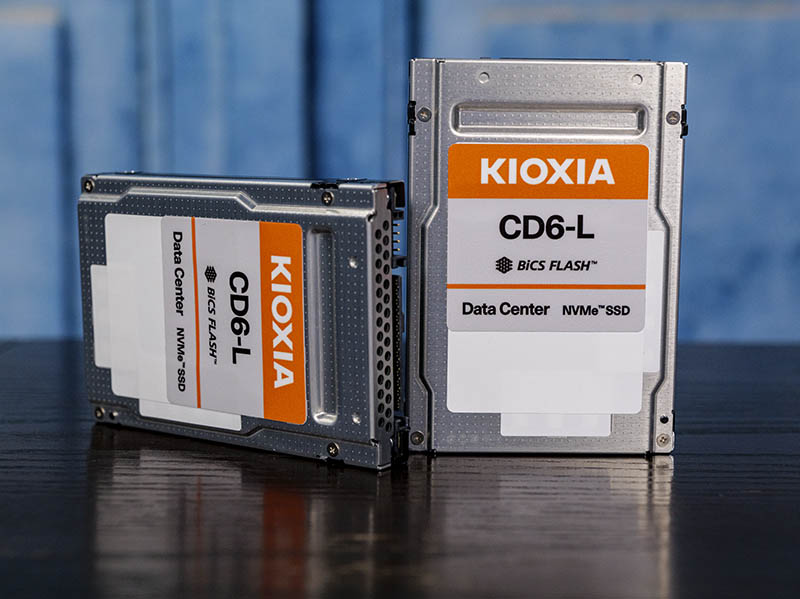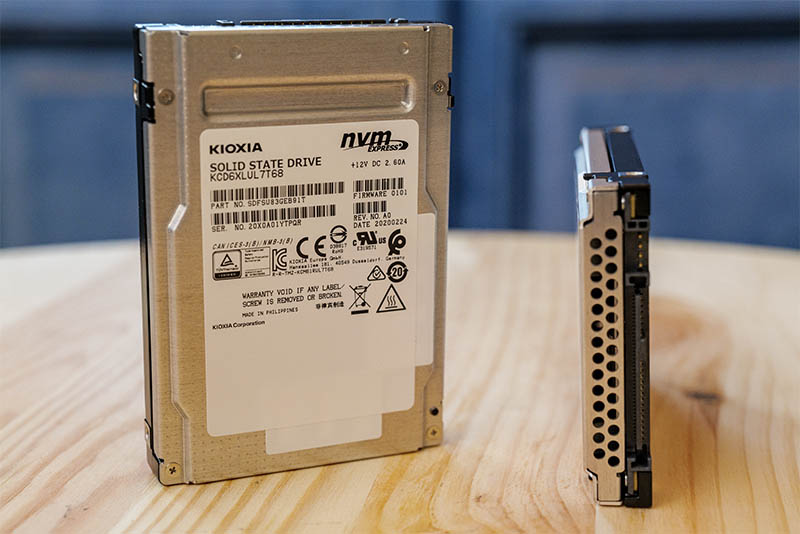A Late Update: The Kioxia CD6-L Variant
Something we were alerted to is that Kioxia is adding another variant of this drive which is dubbed the Kioxia CD6-L which is another variant in the Kioxia CD6 family. From what the company told us; this drive is being tuned for more performance out of a given capacity.

Something that we are going to work on with the new CD6-L variants is comparing the drive to SATA. For this review, we have compared the drives to PCIe Gen3 NVMe SSDs. We did not get to delve into the consolidation of SATA infrastructure to PCIe Gen4 NVMe SSDs. This use case is important to us since we have a lot of 960GB SATA SSDs still in production clusters. Replacing these SSDs on a 4:1 or 8:1 ratio with a PCIe Gen4 SSD like the CD6-L will make a lot of sense if the performance works out. This is doubly so because we can also remove RAID controllers/ HBAs from the mix.
Stay tuned for this later in Q4 2020.
Final Words
The data center SSD market has become very interesting. On one hand, we have what is developing into what Kioxia calls the “enterprise” segment. These are segments that look for high individual per-drive performance, features such as dual-port for traditional HA architectures. The other segment they use is the “data center” market which is more forward-thinking hyper-scale style infrastructure. In the data center, where the CD6 is designed to compete, the cost is a major factor and individual drive performance is somewhat less impactful. Hyper-scalers have different software stacks so perhaps we would segment this as the traditional data center market versus the newer-style scale-out infrastructure market.

In our performance testing, two items became abundantly clear. First, the Kioxia CM6, the “enterprise” SSD is faster. Second, the Kioxia CD6, the “data center” SSD is fast. With PCIe Gen4 and using Kioxia’s BiCS 96-layer TLC NAND the drives clearly outperform the PCIe Gen3 x4 drives by a wide margin simply due to having more interface bandwidth and being able to put more data over the interface every second. The random write performance was clearly lower and what we would expect from a drive marketed as a read-optimized drive.
With that said, for something like the STH hosting cluster, aside from databases where we do not use NAND to store them anymore, the CD6 is exactly the type of drive we would use in our data center and hosting cluster. Our use case, like many other sites out there, is dominated by reads versus writes which makes a drive like this perfect. We also prefer having more drives and larger capacity drives than fewer faster drives. Redundancy through having more drives helps when something goes wrong.
Overall, the Kioxia CD6 performed about how we would expect from a drive in this class, but we should also mention that this is in a smaller competitive pool. While the PCIe Gen3 x4 market is saturated, Kioxia has been early in the PCIe Gen4 ecosystem so there is a good chance that if you buy a PCIe Gen4 read-optimized drive from a major OEM today, it is a CD6. Of course, we are eagerly awaiting the CD6-L test results as a next-iteration of this drive. Stay tuned to STH for that.




I surprised for this phrase: “aside from databases where we do not use NAND to store them anymore”…, neither for index files?